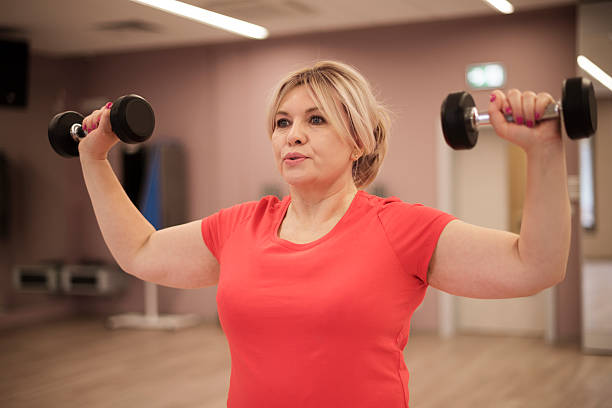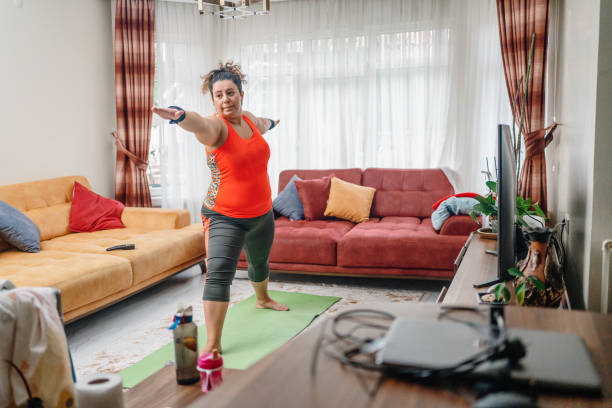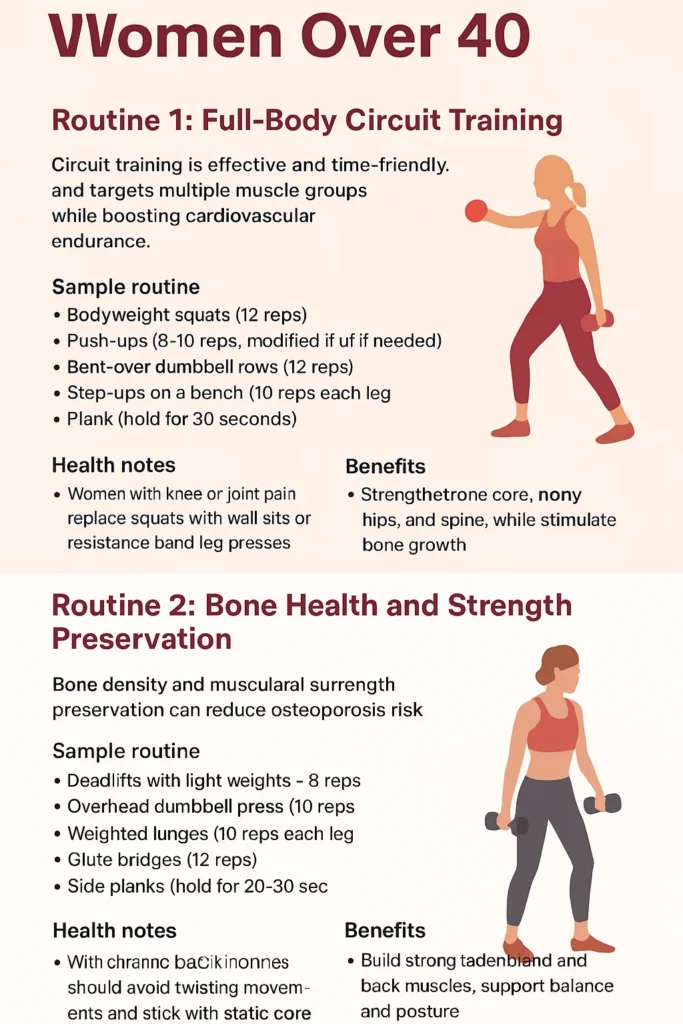Discover effective strength training routines for women over 40 to boost bone health, metabolism, and confidence. Learn safe workouts, benefits, and modifications for age-related health changes.
As women cross the age of 40, their bodies begin to undergo noticeable shifts influenced by hormonal fluctuations, slowed metabolism, and natural muscle loss. This stage often coincides with perimenopause or menopause, periods marked by reduced estrogen levels that can contribute to weight gain, bone fragility, and a decline in overall energy. Many women also face new challenges, such as managing joint pain, back discomfort, or early signs of osteoporosis.
Strength training offers one of the most powerful solutions to these age-related changes. Unlike cardio alone, which primarily benefits heart health, strength training directly combats muscle loss (sarcopenia), supports bone density, enhances metabolism, and boosts overall confidence. For women over 40, structured strength routines are not simply about fitness—they are a long-term investment in functional health, independence, and quality of life.
This article outlines four safe and effective strength training routines for women over 40, with modifications for different health conditions, tips for maximizing benefits, and key safety considerations.
Why Strength Training For Women Over 40 Matters More

1. Combatting Muscle Loss
From the age of 30 onward, women lose about 3–8% of muscle mass per decade, with rates accelerating after menopause. Without intervention, this can affect balance, mobility, and daily independence.
2. Supporting Bone Health
Declining estrogen increases the risk of osteoporosis, making bones more prone to fractures. Weight-bearing exercises like squats, lunges, and deadlifts stimulate bone-building cells, improving density and resilience.
3. Boosting Metabolism
Muscle tissue burns more calories at rest compared to fat tissue. By preserving and increasing muscle mass, women can counteract middle-age weight gain and sluggish metabolism.
4. Improving Mental Health
Strength training is linked to reduced symptoms of depression and anxiety, both of which can be more common during perimenopause and menopause.
5. Enhancing Functional Fitness
Training the body for strength improves daily living—whether it’s lifting groceries, playing with children or grandchildren, or maintaining posture at work.
Also Check: The Beginner’s Guide to Women’s Strength Training
Four Routines For Strength Training For Women Over 40:
Routine 1: Full-Body Circuit Training
Circuit training is efficient and time-friendly, making it perfect for women balancing work, family, and self-care. It targets multiple muscle groups while boosting cardiovascular endurance.
Sample Routine (2–3 rounds):
-
Bodyweight Squats – 12 reps
-
Push-Ups – 8–10 reps (knee or wall push-ups for beginners)
-
Bent-Over Dumbbell Rows – 12 reps
-
Step-Ups onto a bench – 10 reps per leg
-
Plank – 30 seconds hold
Benefits: Improves strength, burns calories, and supports cardiovascular health.
Demerits/Health Considerations:
-
Women with knee pain should replace step-ups with seated leg extensions or resistance band presses.
-
Those with wrist pain can swap planks for forearm holds or bird-dogs.
Routine 2: Bone Health and Strength Preservation
This workout prioritizes bone density and muscular strength, critical for reducing osteoporosis risk.
Sample Routine (3 sets each):
-
Deadlifts with light weights – 8 reps
-
Overhead Dumbbell Press – 10 reps
-
Weighted Lunges – 10 reps each leg
-
Glute Bridges – 12 reps
-
Side Planks – hold for 20–30 seconds
Benefits: Strengthens core, hips, and spine while stimulating bone growth.
Demerits/Health Considerations:
-
Women with lower back pain should replace deadlifts with resistance band pull-aparts or bridges only.
-
Osteoporosis patients should avoid heavy loads and high-impact movements.
Routine 3: Core and Posture Corrective Training
Posture often deteriorates after 40 due to weaker core muscles and long hours of sitting. Core-focused training reduces back pain and improves spinal alignment.
Sample Routine (3 sets):
-
Bird-Dogs – 12 reps per side
-
Russian Twists (light weight) – 10 reps per side
-
Standing Resistance Band Rows – 12 reps
-
Wall Angels – 10 reps
-
Superman Hold – 20 seconds
Benefits: Builds strong abdominal and back muscles, supporting balance and posture.
Demerits/Health Considerations:
-
Women with chronic back issues should avoid twisting (Russian twists) and instead use planks and static holds.
-
Shoulder pain may require modifications of wall angels into lighter band stretches.
Routine 4: Functional Strength for Everyday Living
Functional training helps women maintain independence by mimicking real-life movements.
Sample Routine (3 sets):
-
Kettlebell Deadlifts – 10 reps
-
Farmer’s Carry with Dumbbells – 20 steps
-
Chair Dips – 10 reps
-
Medicine Ball Squats – 12 reps
-
Standing Overhead Reach (light weights) – 10 reps
Benefits: Improves mobility, grip strength, and core stability while preparing the body for everyday demands.
Demerits/Health Considerations:
-
Those with shoulder impingement should skip overhead reaches.
-
Wrist or elbow issues may make chair dips uncomfortable—replace with tricep kickbacks.
Safety Considerations Before Starting
-
Medical Clearance: Women with arthritis, high blood pressure, or bone disorders should consult a doctor before starting.
-
Proper Warm-Up: Always start with 5–10 minutes of dynamic movements to loosen joints and muscles.
-
Form Over Weight: Focus on technique first. Poor form leads to injury.
-
Progression: Begin with bodyweight or light dumbbells. Increase weight gradually.
-
Rest and Recovery: Muscles need 48 hours to recover. Alternate workout days.
Sample Weekly Strength Training Routine

Day 1: Upper Body Focus
- Warm-up: 5-minute brisk walk or arm circles
- Seated Dumbbell Shoulder Press – 2 sets of 12 reps
- Modified Push-Ups or Wall Push-Ups – 2 sets of 10 reps
- Dumbbell Bicep Curls – 2 sets of 12 reps
- Tricep Dips (using a sturdy chair) – 2 sets of 10 reps
- Cool-down: Stretch shoulders and arms
Day 2: Lower Body Focus
- Warm-up: Light cardio or marching in place
- Bodyweight Squats or Chair Squats – 3 sets of 12 reps
- Standing Lunges – 2 sets of 10 reps per leg
- Glute Bridges – 3 sets of 15 reps
- Calf Raises – 2 sets of 15 reps
- Cool-down: Hamstring and quad stretches
Day 3: Core and Balance
- Warm-up: Gentle torso twists
- Planks (on knees if necessary) – 3 sets of 20-30 seconds
- Bird Dogs – 2 sets of 10 reps per side
- Standing Oblique Crunches – 2 sets of 15 reps per side
- Seated Russian Twists (without weights) – 2 sets of 20 reps
- Cool-down: Gentle stretching and deep breathing
FAQs
1. How often should women over 40 strength train?
Two to three times per week is optimal, allowing for recovery between sessions.
2. Can strength training help with menopause symptoms?
Yes, it reduces hot flashes, improves sleep, strengthens bones, and supports weight control.
3. Is lifting heavy weights safe after 40?
Yes, provided progression is gradual and form is correct. Heavy lifting stimulates bone and muscle growth.
4. Should cardio still be included?
Yes, combining cardio (like walking, cycling, or swimming) with strength training provides balanced health benefits.
5. What if I experience joint pain during workouts?
Stop immediately and modify the exercise. Resistance bands, yoga, or water-based training may be gentler alternatives.
Conclusion
Strength training after 40 is one of the best investments women can make in their long-term health. These routines not only preserve muscle and bone but also support hormone balance, mental health, and independence. The key is choosing exercises that fit individual needs, practicing safe progression, and staying consistent.
By committing to strength training, women over 40 can age with confidence, energy, and resilience, proving that it’s never too late to become stronger and healthier.



